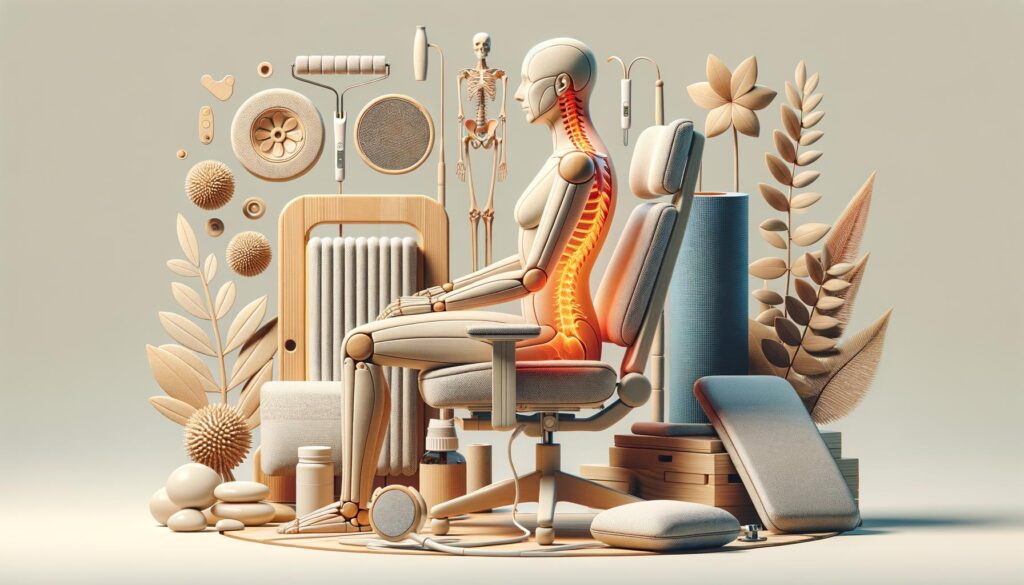Effective Approaches to Relieve Sciatic Nerve Pain

Understanding Sciatic Nerve Pain
The sciatic nerve is the longest nerve in the human body, running from the lower back, through the hips, and down each leg. Sciatic nerve pain, commonly referred to as sciatica, occurs when there is pressure or irritation on the sciatic nerve. This can cause a sharp, burning pain and other symptoms like numbness or tingling down the leg. Key causes of sciatica include a herniated disc, spinal stenosis, or a bone spur.
Common symptoms of sciatic nerve pain include:
- Pain extending from the lower back to the backside and leg
- Numbness or weakness in the leg or foot
- Challenges in performing everyday activities
Understanding these symptoms can aid in diagnosing and differentiating it from other types of back pain, leading to more effective treatment strategies.
Physical Therapies for Pain Relief
Physical therapy is a cornerstone in managing sciatic nerve pain. Therapists tailor a regimen that can include specific exercises and stretches to reduce the pressure on the sciatic nerve. These routines not only focus on symptom relief but also improve the flexibility and strength of muscles supporting the spine.
Essential elements of effective physical therapy for sciatic nerve pain might involve:
- Core strengthening exercises
- Stretching techniques for the lower back
- Aerobic workouts, like swimming or walking
Consistent engagement in these activities helps restore normal movement patterns, offering significant relief from pain over time.
Utilizing Heat and Cold Therapy
Heat and cold therapy are simple yet effective methods to alleviate sciatic nerve pain. Cold therapy, such as ice packs, helps reduce inflammation and numbs the painful area. Applying ice for 15 to 20 minutes at a time can diminish the intensity of pain significantly.
On the other hand, heat therapy increases blood flow and promotes healing. Heat pads or warm baths can soothe tense muscles and ease discomfort. Alternating between cold and heat therapies can provide comprehensive pain relief.
These non-invasive methods allow individuals to manage pain at home, complementing more advanced treatments as needed.
Alternative Therapies
Exploring alternative therapies can offer additional relief for sciatic nerve pain. Acupuncture, an ancient Chinese practice, involves inserting fine needles at specific body points to ease pain. Many report a significant decrease in symptoms following acupuncture sessions.
Chiropractic care is another option that focuses on spinal adjustments to relieve pain and improve function. Regular chiropractic visits can aid in realigning the spine, further alleviating pressure on the sciatic nerve.
These approaches are often pursued in combination with traditional treatments, offering a more holistic approach to managing sciatica.
Preventive Measures and Lifestyle Modifications
Prevention is pivotal in managing sciatic nerve pain and preventing future flare-ups. Adopting healthy habits and making lifestyle changes can greatly benefit those prone to sciatic pain. Key strategies include maintaining a good posture, especially in work settings, and engaging in regular physical activity to strengthen the back and core muscles.
It’s recommended to avoid lifting heavy objects without proper technique, and when sitting for extended periods, individuals should take frequent breaks to stretch and walk around.
These changes not only reduce the risk of sciatic nerve pain but also contribute to overall well-being.
Conclusion
Dealing with sciatic nerve pain requires a multifaceted approach combining medical advice, physical therapies, and lifestyle changes. By understanding the intricacies of sciatica, one can better manage symptoms and improve quality of life. While immediate relief methods like heat and cold therapy provide temporary comfort, long-term strategies focusing on physical activity and preventive measures are crucial for sustained pain management. Take proactive steps today to mitigate discomfort and maintain an active lifestyle.
